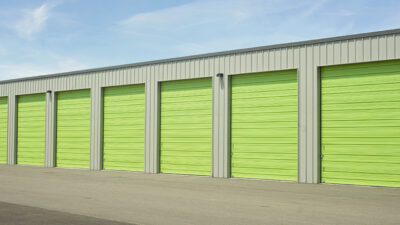While self storage operators must carefully monitor and manage their facility’s occupancy to maximize their bottom line, misconceptions linger about the best strategy for measuring occupancy. Many storage facilities have no problems capturing and retaining tenants. When reviewing their rent rolls, they appear to be 90% or 95% rented. Are these prime acquisition targets? They won’t have any problems achieving maximum leverage from a refinance, right? Unfortunately, reviewing a rent roll doesn’t provide the full picture of a property’s operations.
The occupancy level at self storage facilities can be measured in different ways. While some operators measure occupancy in terms of square footage, the most common measurement of physical occupancy is the number of units rented: a 100 unit facility with 95 units rent is operating at a 95% physical unit occupancy.
Another key measurement metric, one that provides a better picture of operations, is economic occupancy. Economic occupancy is the difference between the actual rental income being generated and the gross potential rent of a property. Economic occupancy takes several factors into consideration, including turnover periods between tenants, concessions and rent incentives (such as one free month of rent or percentage based rental discounts), late or unpaid rent, or units that are occupied rent free by an owner or property manager. For example, if we use the same 100 unit storage facility with a 95% physical unit occupancy, but 1 unit is also occupied rent free by the property manager, 7 units currently receive one month of free rent as a move in concessions, another unit has 2 months of delinquent rent, and all rents are 10% below market levels due to a lack of increases in rents over the past two years, it would have an economic occupancy of 83.25%.
5% (physical vacancy) + 1% (manager’s unit) + 0.583% (free rent) + 0.167% (credit loss) + 10% (below market rent) = 16.75% economic vacancy (or 83.25% occupancy)
When rents are at market levels, economic occupancy is typically about 2% to 5% lower than physical unit occupancy due to discounts and concessions.
The sample occupancy statistics report below shows where physical and economic occupancy can typically be found on our facility reports.
A quick test of economic occupancy is to divide monthly deposits by the gross potential rent. For example, if your facility has 95% of the units rented at market level rents that total $80,000 in a given month and your deposit to the bank is $60,000, your economic occupancy is only 75% ($60,000 ÷ $80,000). Do you know how your facility is performing?

 Alex Conley
Alex Conley

 Nancy Caniff
Nancy Caniff
 Justin Butler
Justin Butler
 TJ Wind
TJ Wind